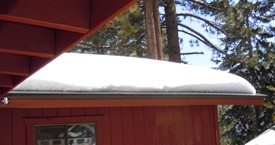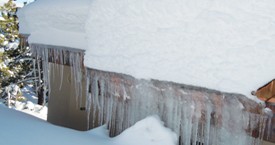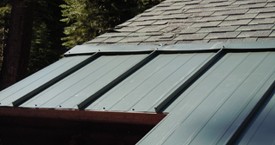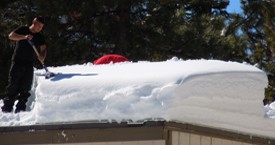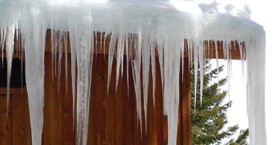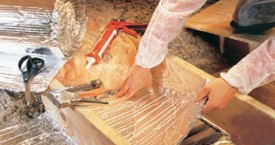Myths About Ice Dams
Everybody seems to have their own theories on ice dams. . . how they form, what to do about them, etc.
Here’s our take.
In the High Sierras we see all sorts of winter conditions resulting in various ice formations: light snows, heavy snows, dry snows, wet snows, sometimes drenched with torrential rains that turn snow into a solid ice mass; temperatures well below 0°, temperature swings of 60° or more in a single day, and the list goes on.
We’ve made the Summit family of ice melt products the ideal solution for all conditions.
Ice Dam Myth #1
“You need to heat the roof several feet up from the edge.”
Ice dams are formed when meltwater from the heated living area exits the snow at the edge and re-freezes. Summit focuses heat right here. Some systems require you to heat well up the roof unnecessarily.
Ice Dam Myth #2:
“A ventilated roof will prevent icicles
and ice dams formations.”
Many feel ice dams are a result of inadequate ventilation. Modern construction is ventilated by code. Find out why adding ventilation may not be solution for preventing ice dams.
Myth #3:
“Metal edging along roof eaves
prevents ice dams and roof damage.”
Metal edging along roof eaves has been used in trying to prevent ice dams and damage to shingle roofing. Find out how metal edging has created many new problems that previously never existed.
Myth #4:
“Eliminate ice dams by shoveling snow off the roof’s eave edges.”
Shovel your roof to prevent ice dams? See why you have to keep the entire roof clear of snow or you’ll have a new set of problems.
Myth #5:
“Ice and water shield type membranes
prevent ice dams and leaks.”
Ice dam membranes are designed to help prevent ice dam leaks, not to stop ice dams. Unfortunately they are not 100% foolproof. Find out why.
Ice Dam Myth #6:
“Sealing Attic Spaces Prevents Ice Dams.”
Attic sealing helps prevent heat loss into attic spaces. Find out why it is not a reliable solution for preventing ice dam formations.

